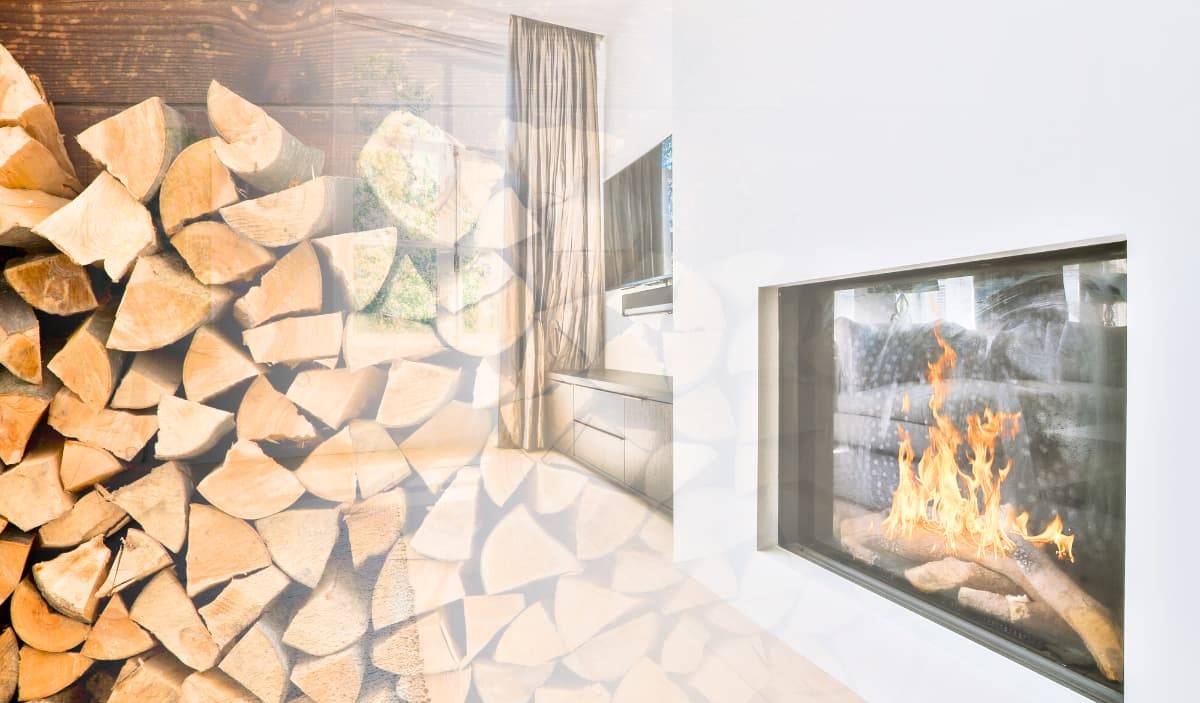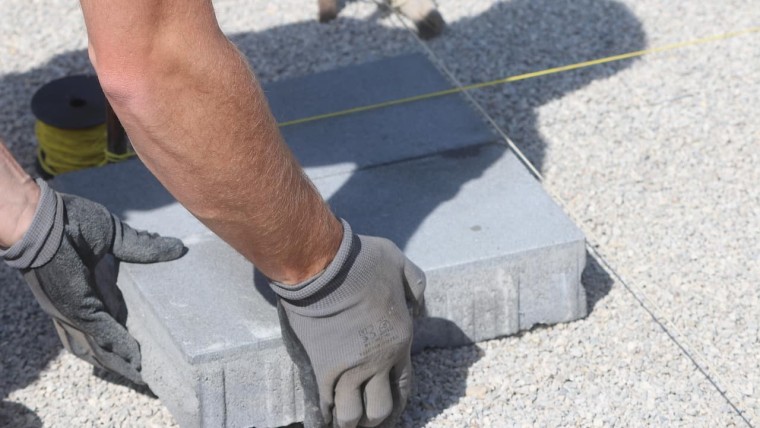If you want to enjoy the fire this winter, it's best to keep your firewood dry. In this article, I tell you about the 4 main mistakes to avoid to keep your wood dry all winter long and avoid any moisture problems.
Mistake #1: Taking the wood storage location lightly
The first step to dry wood all winter long is to choose a suitable place to store your wood. If you neglect this point, no matter how hard you try, you won't get the wood dry.
In general, we opt for an outdoor space or a dedicated shelter. To ensure your wood is well preserved, it's essential to keep it away from areas exposed to melting snow or damp.
Also, remember to store wood far enough away from the house if possible, as this can attract termites, and you don't want to sacrifice your lovely wooden furniture.
The main recommendations are as follows:
- Choose a sunny, airy location to speed up drying and moisture removal.
- Avoid storing wood directly on the ground; use pallets to elevate it instead and facilitate water flow.
- Keep a sufficient distance between your firewood and the walls of your home to eliminate the risk of termite infestation.
Mistake No. 2: Buying damp wood
Logically, it's better to buy dry wood directly.
For good combustion in a fireplace or wood-burning stove, your wood must have a moisture content of less than 20%. In fact, wood that is too damp (30 or 40% moisture content) can reduce the efficiency of your appliance by 25% compared with dry wood, and lead to higher wood consumption, which is detrimental to your heating budget.
Damp wood also generates more air pollution, through the emission of fine particles that are very bad for your health.
Pay attention to your supplier.
Generally speaking, if you buy your firewood in a store, it has already been dried and is ready to use.
However, if you decide to collect your own wood for economic or ecological reasons, you'll have to dry it yourself. Alternatively, you can buy it from a freelancer on a classified ads site, who will then collect it from a forest. You'll also have to dry it yourself.
To do this, it is important to follow the rules of the trade:
- Cut it into logs to fit your chimney.
- Gather logs in even, well-spaced stacks to facilitate air circulation.
- Let them dry for about six months to a year before use.
So you'll need to buy your firewood a year or a year and a half in advance to get it right!
NB: as a general rule, it's forbidden to harvest wood in forests, unless you own the property, or unless you have the owner's agreement. Forests always belong to someone, in France and Europe in general. If it's not private property, it belongs to the State, and you risk a fine of over €1,000 (if you're caught). However, some communes in France open up their forests every year to residents who heat with wood, and allow them to collect a certain number of steres.
Mistake #3: Leaving wood outdoors
If you're storing wood outside the house on pallets, for example, as recommended above, then one imperative is to lay a protective tarpaulin over the top.
The use of a tarpaulin or other type of cover is essential to protect your firewood from typical winter weather conditions: rain, snow or hail.
That way, you'll have fewer moisture problems. Remember also to remove this protection on sunny days to allow the wood to dry naturally.
Mistake No. 4: Making life too easy for pests of all kinds
A common problem when storing wood outdoors is the attraction it holds for many species of insect, which can damage it by burrowing inside. To avoid this, make sure you :
- Keep your wood storage area clean by removing waste and plants likely to harbor insects.
- Inspect your wood regularly for the presence of these undesirable pests, and take preventive measures if necessary (traps, chemical or natural treatments...).
In brief: 4 keys to keeping your firewood dry in winter
Following on from all these comments, here's what you need to remember
- Choose a suitable storage location: sunny, high up and as far away from your home as possible.
- Buy wood that has already been dried, or dry it yourself according to recommended best practice. Wood bought in the spring of 2024 and properly dried could be used in the winter of 2026! Yes, that's a long time.
- Protect your wood with a suitable tarpaulin that will keep moisture at bay while allowing it to dry in sunny weather (when you remove it on a sunny day).
- Watch out for pests and combat them with rigorous maintenance and targeted preventive measures.
With all this advice, you should be well prepared for any eventuality, and have properly seasoned wood for next season or 2 years from now! If this is your first season heating with wood, it's worth buying your own wood.

Julien G.
Juliena mechanical engineering graduate and specialist in climate engineering since 2009, has become a writer specializing in renewable energies, with expertise in heat pumps and photovoltaic solar panels for individual housing.
See all articles by this author






